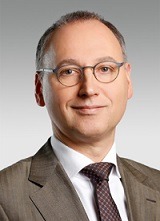The New Bayer: Where Does Its Pharma Business Stand?
Bayer’s completion of its $63-billion acquisition of Monsanto, an agrochemical and seed company, fortifies the company’s plan of becoming a pure-play life-sciences company focused on pharmaceuticals, crop science, consumer healthcare, and animal health. But with such a large play into crop protection, where does its pharmaceuticals business now stand?
With the acquisition, Bayer’s crop-science business will now be the largest piece of Bayer by revenue, eclipsing its pharmaceutical business, which accounted for nearly 50% of the company’s sales in 2017. DCAT Value Chain Insights examines the new Bayer.
Inside the deal
Bayer completed its $63-billion acquisition of Monsanto earlier this month (June 2018), which ended a two-year effort to acquire the company and marking the largest acquisition in Bayer’s history. Bayer first announced its intention to acquire Monsanto in May 2016 and formally announced the deal in September 2016. According to the conditional approval from the US Department of Justice for the deal, the integration of Monsanto into Bayer can take place as soon as divestments of certain crop-protection assets to BASF have been completed. Bayer says that this integration process is expected to begin in approximately two months.
 |
|
Werner Baumann Chairman, Bayer |
Including Monsanto and taking the divestitures into account, Bayer’s health and agriculture businesses will have total pro forma sales of around EUR 45 billion ($53 billion), including combined sales of the crop-science business of around EUR 20 billion ($23 billion). With the acquisition of Monsanto, Bayer’s crop-sciences business will be the largest piece of Bayer by sales, surpassing its pharmaceutical business, which accounted for nearly 50% of the company’s sales in 2017. In 2017, Bayer had total sales of EUR 35.015 billion ($41.180 billion) with pharmaceuticals accounting for EUR 16.847 billion ($19.842) or 48% of sales. Sales of the crop-science business were EUR 9.577 billion ($11.250 billion), and sales of its consumer-healthcare business were EUR 5.862 billion ($6.887 billion). Sales of its animal-health business were EUR 1.571 billion ($1.848 billion).
Bayer’s focus on life sciences is being led by Werner Baumann, who became chairman of the board of management of Bayer AG on May 1, 2016 and who continued the strategic decision to make life sciences the focus of Bayer. That process began full force with the decision to spin off its material-science (i.e., polymers) business, an approximate $12.5-billion business, which the company did in 2015 to form a separate, independent company, Covestro. Bayer took an equity position in the spinoff but has since reduced its holdings. In 2017, Bayer reduced its direct interest in Covestro from 64.2% to 24.6% and further reduced its holding to 6.8% in 2018 (as of May 2018). Bayer then took on a new corporate structure in January 2016 with three divisions: pharmaceuticals, consumer healthcare, and crop science, and a separate business unit, animal health.
Inside Bayer’s pharmaceutical business
With such a large investment in its crop-protection business through the acquisition of Monsanto, where does Bayer’s pharmaceuticals business now stand? Bayer’s Pharmaceuticals Division focuses on prescription products, mainly consisting of women’s healthcare and cardiovascular health products and specialty medicines in oncology, hematology, and ophthalmology. The division also comprises the radiology business, which markets diagnostic imaging equipment and contrast agents.
Sales of the company’s pharmaceuticals business rose by 4.3% (fixed and portfolio adjusted) to EUR 16.847 billion ($19.842 billion) in 2017. The company’s medium-term growth is being primarily driven by several products: Xarelto (rivaroxaban), an anticoagulant with 2017 sales of EUR 3.298 billion ($3.884 billion) and its top-selling product; Eylea (flibercept), an eye-care drug with 2017 sales of EUR 1.880 billion ($ 2.214 billion); the cancer drugs, Stivarga (regorafenib) with 2017 sales of EUR 315 million ($371 million) and Xofligo (radium 223 dichloride) with 2017 sales of EUR 408 million ($480 million); and Adempas (riociguat), a drug to treat pulmonary hypertension with 2017 sales of EUR 295 million ($347 million). Sales of these products increased 16.3% in 2017 to EUR 6.196 billion ($7.299 billion). Combined sales of the company’s 15 best-selling pharmaceuticals products advanced by 6.9% in 2017.
On a pipeline basis, the company had 14 programs (new molecular entities or new indications for existing drugs) in Phase III development as of January 2018 and 14 programs in Phase II development. In 2017, the company achieved its target to transfer 10 new molecular entities from its research pipeline into preclinical development. Three main products were in the registration phase and under regulatory review as of January 2018: damoctocog alpha pegol, a long-acting rFVIII factor in review in Europe, the US, and Japan for treating hemophilia A; rivaroxaban in the US and Europe for preventing major cardiac events; and rivaroxaban in the US for secondary prophylaxis of acute coronary syndrome in combination with dual antiplatelet therapy.





